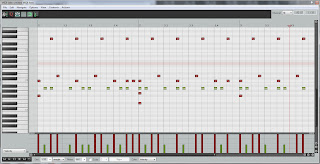Now that I have a little more experience with mixing I figured I could share some of what I've learned.
When mixing your songs you'll find it useful to know where each instruments sits in the mix. I won't lie and pretend I know everything about frequency ranges, so you don't need to need to know it either.
Here's where your instruments sit in a typical djent/metal song:
Frequency Ranges
Guitar
80HZ to 5000HZ (5KHZ)
Bass
40HZ to 5000HZ 5(KHZ)
Drums
40HZ to 20,000HZ (20KHZ)
Now the next major part is knowing where each instrument clashes, this will allow you to cut your EQ in certain spots on each track giving each instrument their own "space".
Clashes
GTR & BASS
80hz OR LESS
GTR & DRUMM
400HZ AND 2000HZ TO 5000HZ
DRUMS & BASS
LOW 60HZ MID 400HZ HIGH 2000 TO 8000HZ
Just so it's clear, you're guitar and bass will clash anywhere from 80HZ or less, your guitar and drums will clash around 400HZ and 2 to 5KHZ, and your drums and bass will clash around 60HZ, 400HZ, and between 2 to 8KHZ.
The biggest and best part of this is knowing all of these things combined, where to cut your EQ's so that you'll hear each instrument properly in the mix. Thus avoiding muddy mixes and giving your tracks clarity and overall better sound. Here are the cuts you should make:
Cuts
GTR 100HZ AND BELOW
GTR DROP 2-3BD AT 2000 TO 5000HZ
DRUMS DROP 2-3DB AT 400HZ
DRUMS DROP 6DB AT 60 TO 80HZ
Same principle as before, this means you should create a high pass filter on your first EQ band in your guitar track and cut anything below 100HZ. As well as drop 2-3 decibels at approximately 2 to 5KHZ. As for drums, drop 2 to 3 decibels at approximately 400HZ, and drop roughly 6 decibels at approximately 60 to 80HZ.
Drops in DB's should be made with a fairly thin bandwidth so as to not lower too much of the rest of the EQ.
Here's a picture of the EQ settings I currently use. Notice the small cuts in DB's.
Of course these are all guidelines, not written in stone. You can also try creating a peak similar to my 4th band, and sweep it across to find a sweet spot where it makes your track sound better. In my mix I found that making a little bump around 5000HZ gives my guitar tracks a little extra shine that they otherwise wouldn't have.
Have fun playing with these things, and most of all be patient. Try new things until you get it to a point that you enjoy.
Happy EQ'ing!







